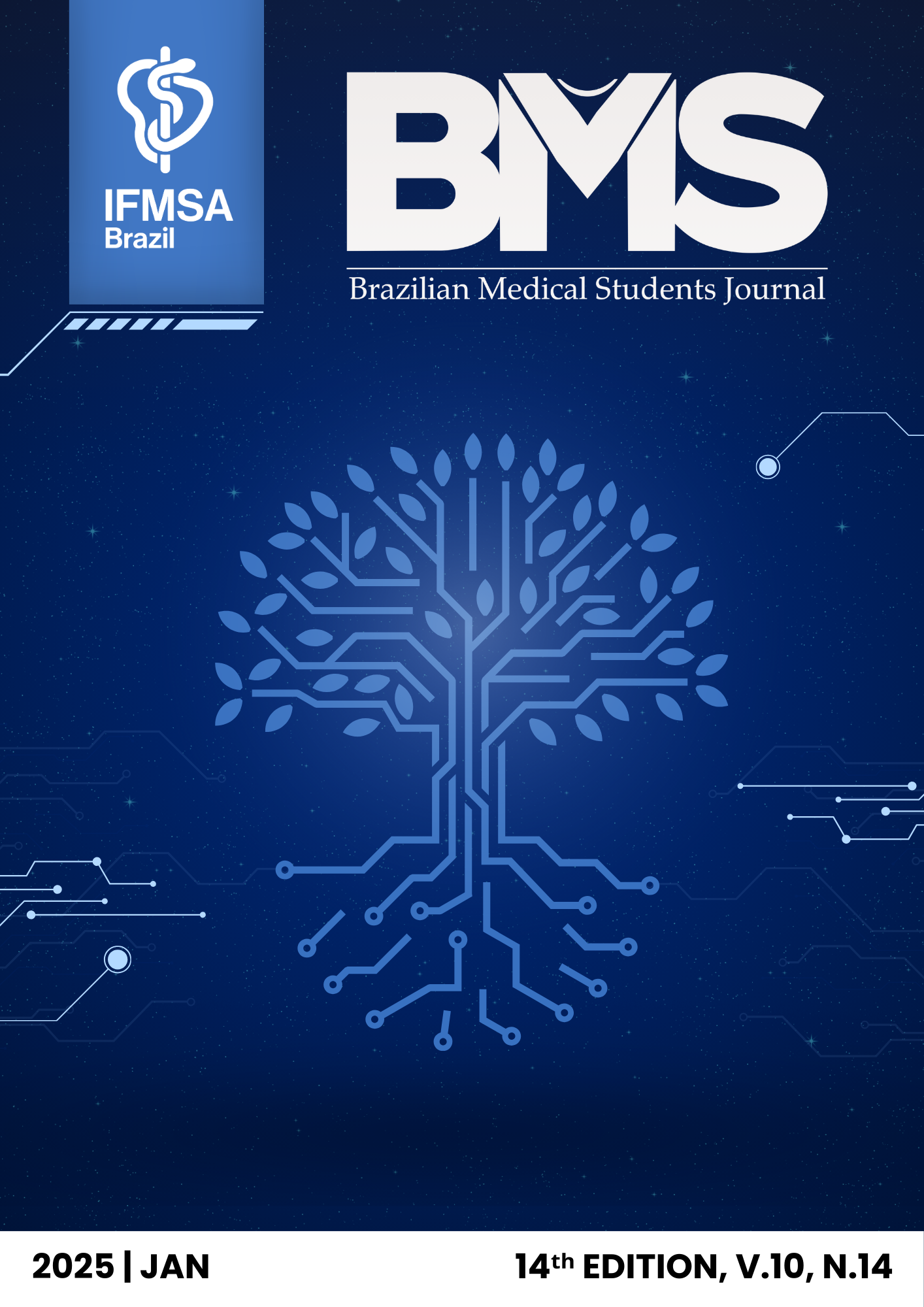Teddy Bear Hospital: The Project – An Experience Report
DOI:
https://doi.org/10.53843/bms.v10i14.732Keywords:
Health education, Medical Education, Pediatrics, Playful ApproachAbstract
Introduction: Often, children may experience fear when it comes to medical appointments. In this scenario, initiatives from the Teddy Bear Hospital play an important role in demystifying medical care for this audience, mainly through a playful approach that illustrates in an accessible way the functioning of healthcare. The main goal was to clarify children about healthcare procedures, seeking to establish a healthier and more humanized doctor-patient relationship, while also reinforcing the idea of the hospital environment as a safe and welcoming place. Experience Report: The Teddy Bear Hospital project was implemented at the Municipal Schools in XXX. Participation involved 71 medical students and a total of 371 children from 2nd to 5th grade (Early Childhood Education and Elementary School I). The playful simulation began with students assuming the role of caregivers for their stuffed teddy bears, which went through distinct stages. Consultation Room 1, where physical examination and anamnesis were carried out, the Examination Room, where the concepts of tomography and X-ray were presented and demonstrated on the teddy bears, and Consultation Room 2, where the toys received medical guidance and vaccines. Discussion: The achieved results were remarkable, evidenced by the reduction in the number of students who initially expressed displeasure or fear regarding medical appointments, as observed in the pre- and post-participation forms. Positive feedback from the children regarding the understanding and acceptance of medical care is evident. The project also received favorable evaluations from the involved medical students, contributing to the development of their communication skills and to establishing positive relationships with pediatric patients. Conclusion: The positive impact of the dynamics was confirmed, achieving the proposed objectives and dissociating medical care from fear and apprehension, providing learning about health, disease, and hospital procedures to the children.
References
1. Veríssimo MD. A experiência de hospitalização explicada pela própria criança. Rev Esc Enferm USP. 1991;25(2):153-68. DOI: https://doi.org/10.1590/0080-6234199102500200153
2. Bloch YH, Toker A. Doctor, is my teddy bear okay? The "Teddy Bear Hospital" as a method to reduce children's fear of hospitalization. Isr Med Assoc J. 2008;10(8-9):597-9.
3. Lerwick JL. Minimizing pediatric healthcare-induced anxiety and trauma. World J Clin Pediatr. 2016;5(2):143-50. DOI: https://doi.org/10.5409/wjcp.v5.i2.143
4. Watanabe M, Kato M, Matsuda YT, Taniguchi K, Itakura S. The infant–doctor relationship: an examination of infants’ distress reactions in the presence of a doctor. Sci Rep. 2024;14(1):1-9. DOI: https://doi.org/10.1038/s41598-024-58677-5
5. Wright KD, Stewart SH, Finley GA, Buffett-Jerrott SE. Prevention and intervention strategies to alleviate preoperative anxiety in children: a critical review. Behav Modif. 2007;31(1):52-79. DOI: https://doi.org/10.1177/0145445506295055
6. Gomes GLL, Fernandes MGM, Nóbrega MML. Ansiedade da hospitalização em crianças: análise conceitual. Rev Bras Enferm. 2016;69(5):884-9. DOI: https://doi.org/10.1590/0034-7167-2015-0116
7. International Federation of Medical Students’ Associations (IFMSA). Teddy Bear Hospital [Internet]. [cited 2024 Jul 9]. Available from: https://ifmsa.org/teddy-bear-hospital/
8. Ribeiro SM, Basso MB, Massignan C, Leal SC. Playful educational interventions in children and adolescents’ health literacy: a systematic review. Health Promot Int. 2023;38(4):1-14. DOI: https://doi.org/10.1093/heapro/daad089
9. Rolim AAM. Uma leitura de Vygotsky sobre o brincar na aprendizagem e no desenvolvimento infantil. Rev Humanidades. 2008;23(2):176-80. DOI: https://doi.org/10.5020/23180714.2008.440
10. Brasil. Ministério da Educação. Conselho Nacional de Educação. Câmara de Educação Superior. Diretrizes Curriculares Nacionais do Curso de Graduação em Medicina. Brasília: MEC; 2014.
11. Kis H, Endres K, Karwowska A, Harrison M, Lau S, Lemire O, et al. “Teddy Bear Hospital Project” school visits improve pre-clerkship students’ comfort explaining medical concepts to children. Can Med Educ J. 2022;13(3):70-4. DOI: https://doi.org/10.36834/cmej.73167
12. Baldivia GC, Neto EA, Aguiar JM, Moreto G. Bear Hospital Project as an educational strategy for the development of communication skills during medical education. Arch Med Fam. 2018;20(2):49-58.
13. Nheu L, Uahwatanasakul W, Gray A. Medical students’ experience of a Teddy Bear Hospital as part of a paediatric curriculum. Focus Health Prof Educ. 2018;19(3):40-6. DOI: https://doi.org/10.11157/fohpe.v19i3.217
14. Sachs JD. From millennium development goals to sustainable development goals. Lancet. 2012;379(9832):2206-11. DOI: https://doi.org/10.1016/S0140-6736(12)60685-0
15. Sociedade Brasileira de Pediatria; Sociedade Paraibana de Pediatria. Cartilha de Desenvolvimento: 2 meses a 5 anos. 2024.
16. Sociedade Brasileira de Pediatria. Tratado de Pediatria. 6th ed. Barueri: Manole; 2024.
Downloads
Published
Issue
Section
License
Copyright (c) 2025 Victoria Brandel Cruz, Amanda de Faria Campos, Camilla Mannarino Calil, Camilo Costa Ferreira, Hugo Lorran Souza Costa, Pedro Henrique Melo Sipoli Marques, Sofia Maria Cardoso de Paiva

This work is licensed under a Creative Commons Attribution 4.0 International License.
User licenses define how readers and the general public can use the article without needing other permissions. The Creative Commons public licenses provide a standard set of terms and conditions that creators and other rights holders can use to share original works of authorship and other material subjects to copyright and certain other rights specified in the public license available at https:// creativecommons.org/licenses/by/4.0/deed.pt_BR. Using the 4.0 International Public License, Brazilian Medical Students (BMS) grants the public permission to use published material under specified terms and conditions agreed to by the journal. By exercising the licensed rights, authors accept and agree to abide by the terms and conditions of the Creative Commons Attribution 4.0 International Public License.






